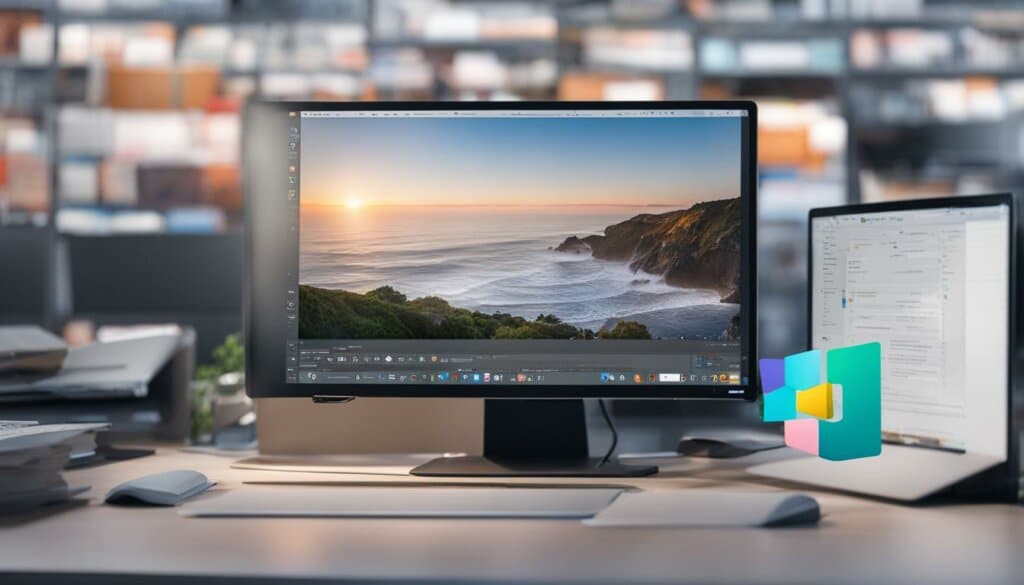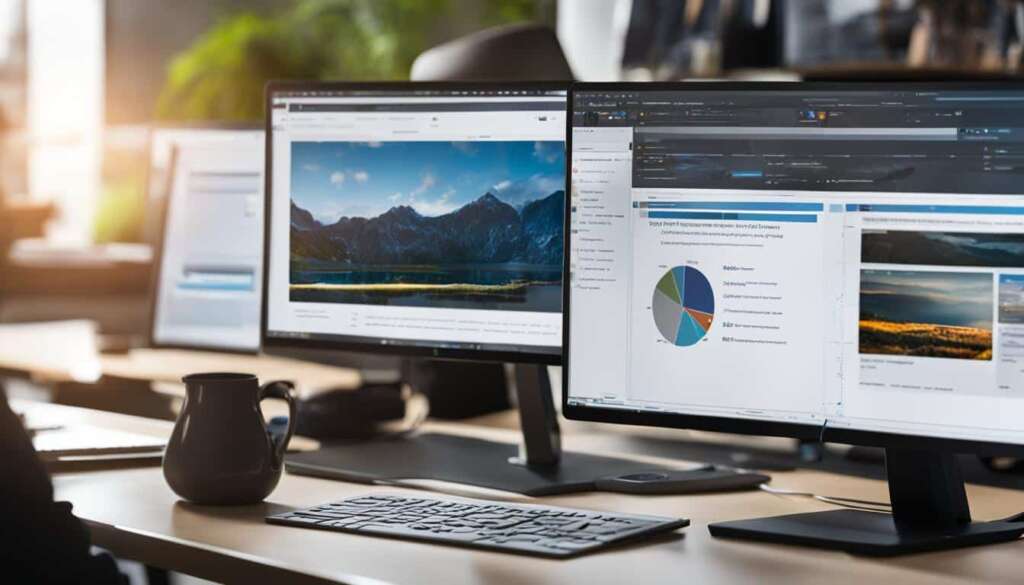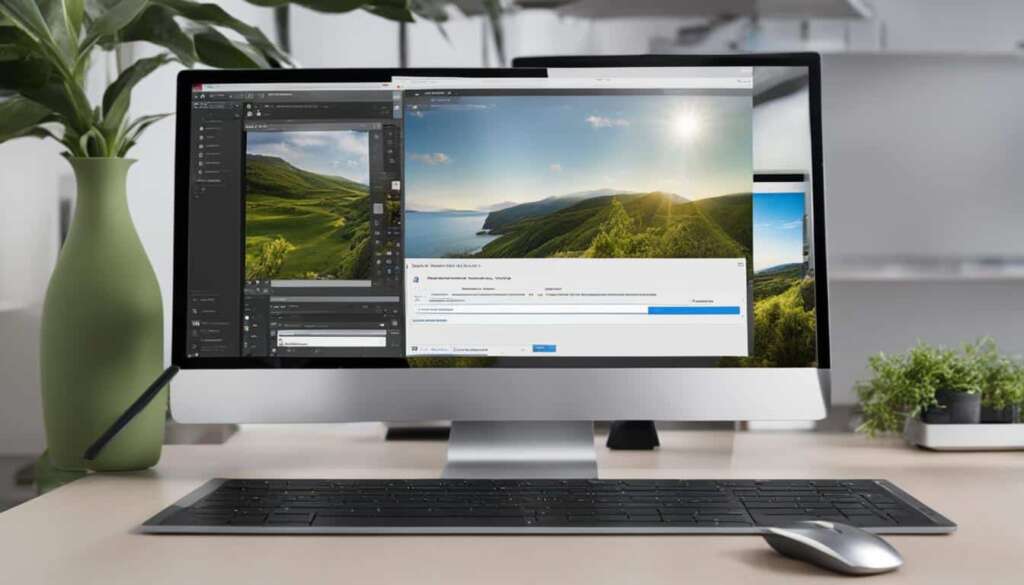Table of Contents
Welcome to the world of desktop organisation! In today’s digital age, our desktops can quickly become a chaotic mess of files and folders, making it difficult to find what we need and hindering our productivity. But fear not! There’s an easy solution to this clutter conundrum: creating folders on your desktop.
By utilising this simple yet effective technique, you can declutter your digital workspace and revolutionise the way you organise your files. Whether you’re a student juggling multiple projects or a professional managing various work assignments, creating folders on your desktop is a game-changer.
So, how do you create a folder on your desktop? It’s as easy as one, two, three. In the next section, we’ll guide you through the step-by-step process to create a folder on your desktop and unleash the power of organised digital space.
Keyword: how to create a folder on desktop, desktop folder creation, create new folder on desktop
Understand the Importance of Folder Structure
A folder structure serves as a hierarchical system that enables you to organise your files in a logical and systematic way. It is an essential tool for efficient file management and ensures that your documents, images, and other files are stored in designated folders for easy access.
By implementing a well-organised folder structure, you can avoid the chaos of standalone files floating around your desktop. Instead, you can create a hierarchical system that reflects the categorisation and relationships between different files and folders.
With a folder structure in place, you can easily navigate through your files and find specific documents when needed. No more wasting time searching through a cluttered desktop or relying on desktop search functions.
Think of a folder structure as the foundation of your digital workspace. Just as a well-structured physical filing system allows for efficient organisation and retrieval of documents, a well-designed folder structure ensures that your digital files are organised and accessible.
By organising your files and folders in a logical hierarchy, you can:
- Streamline your workflow
- Save time by quickly locating files
- Promote efficient collaboration
- Prevent data loss
- Maintain a clutter-free desktop
Whether you’re managing personal files or working in a team, a folder structure is a fundamental component of effective file organisation. Embrace the power of hierarchy and organise your digital space for improved productivity and efficiency.
Step-by-Step Guide to Creating a Folder on Desktop
Are you tired of a cluttered desktop with files scattered everywhere? Creating folders on your desktop can help you bring order to the chaos and make file management a breeze. Follow these simple steps to create a folder on your desktop:
- Right-click on an empty area of your desktop. A context menu will appear.
- In the context menu, hover over the “New” option.
- A submenu will pop up. Click on “Folder“.
- A new folder will be created on your desktop, with the default name “New Folder”.
- Click on the folder name to rename it to something more meaningful and descriptive.
And that’s it! You’ve successfully created a folder on your desktop. Now you can start organizing your files into the newly created folder for a clutter-free and efficient workspace.

| Steps | Description |
|---|---|
| 1 | Right-click on an empty area of your desktop |
| 2 | Hover over the “New” option in the context menu |
| 3 | Click on “Folder” in the submenu |
| 4 | A new folder with the default name “New Folder” will be created on your desktop |
| 5 | Click on the folder name to rename it |
Now that you know how to create a folder on your desktop, take the first step towards a more organized digital workspace. Stay tuned for the next section, where we’ll share valuable tips on effectively organizing files and folders on your desktop.
Tips for Organising Files and Folders Effectively
Organising files and folders on your desktop is essential for maintaining productivity and keeping your digital workspace clutter-free. Here are some effective tips to help you manage your desktop folder system and create a streamlined organisational structure:
1. Categorise Your Folders
Start by categorising your folders based on their contents or the projects they relate to. By grouping similar files together, you’ll be able to locate them more quickly and easily.
2. Use Descriptive Folder Names
When creating folders, give them descriptive names that clearly indicate their contents. Avoid generic names like “Folder 1” or “New Folder,” as they can lead to confusion later on.
3. Create Subfolders
If you have a large number of files within a specific folder, consider creating subfolders to further organise your files. This hierarchical structure will help you navigate through your files more efficiently.
4. Color Code Folders
Assigning colors to folders can visually distinguish them from one another and make it easier to identify specific folders at a glance. Choose colors that are meaningful to you and align with your organisational system.
5. Utilise Tags and Labels
Many operating systems allow you to add tags or labels to files and folders. Take advantage of this feature to add additional metadata and make it even simpler to search for and locate files.
6. Regularly Declutter
Periodically review your folders and files to remove any outdated or irrelevant items. This decluttering process will ensure that your desktop remains organised and free from unnecessary files.
7. Backup Your Files
Don’t forget to regularly back up your files and folders to prevent the loss of important data. Consider using cloud storage or external hard drives to create reliable backups.
By implementing these tips, you can improve your desktop folder management and create an organised system that enhances your productivity and efficiency. Keep your digital workspace tidy and enjoy the benefits of a clutter-free desktop environment.
Quick Tips for Finding Files on Your Desktop
When you have a lot of files on your desktop, finding specific ones can become time-consuming. That’s why it’s crucial to know some quick tips to find files more efficiently. Whether you’re using a Mac or Windows, these tips will help speed up your search and streamline your workflow.
1. Use the Search Function
One of the quickest and easiest ways to locate files on your desktop is by using the built-in search function. On both Mac and Windows, you can simply click on the search bar or press the Command key + F (Mac) or Ctrl key + F (Windows) to initiate the search. Then, type in the name or keywords related to the file you’re looking for, and the system will display the matching results.
2. Organize Files in Folders
Creating folders and organizing your files into them according to specific categories or projects can significantly reduce the time spent searching for files. By grouping related files together, you can easily locate them in the designated folders. To create a new folder, right-click on the desktop, select “New Folder,” and name it accordingly. Then, drag and drop the relevant files into the folder.
3. Utilize File Tags
Both Mac and Windows offer the option to add tags or labels to your files. Tags allow you to categorize files based on custom keywords, making it easier to search for them later. To add tags to a file, simply right-click on it, select “Get Info” (Mac) or “Properties” (Windows), and navigate to the “Tags” or “Labels” section. Add relevant tags to the file and press Enter/Return to save the changes.
4. Sort Files by Date, Size, or Type
Sorting files by date, size, or type can be immensely helpful when searching for specific files. On both Mac and Windows, you can click on the column headers in a file explorer window to sort the files accordingly. For example, clicking on the “Date Modified” header will sort the files by the most recently modified ones, making it easier to find the latest version of a file.
By implementing these quick tips, you can save time and effort in locating files on your desktop. Remember to stay organized with folders and utilize features such as search functions and file tags to enhance your file management system. With these strategies in place, searching for files will no longer be a daunting task.
Merge Folders and Manage Your Files
When it comes to managing files on your Mac or Windows computer, having duplicate folders with the same name in different locations can create confusion and clutter. Thankfully, you can merge these folders into a single folder to streamline your file management and ensure everything is organized in one central location.
To merge folders on Mac:
- Locate the duplicate folders that you want to merge.
- Click and hold the Command key on your keyboard.
- Select the duplicate folders you want to merge.
- Right-click on one of the selected folders.
- From the context menu, choose “Merge Folders”.
- The selected folders will be merged into a single folder with all the contents combined.
To merge folders on Windows:
- Open the folder that contains the duplicate folders.
- Click and hold the Ctrl key on your keyboard.
- Select the duplicate folders you want to merge.
- Right-click on one of the selected folders.
- From the context menu, choose “Cut”.
- Navigate to the destination folder where you want to merge the folders.
- Right-click within the destination folder and choose “Paste”.
- The selected folders will be merged into a single folder with all the contents combined.
Merging folders allows you to declutter your file system, eliminate duplicate files, and make file navigation more efficient. It’s a simple yet powerful technique for keeping your files organized and easily accessible.

Conclusion
Creating folders on your desktop is an easy and effective way to organise your files and enhance your productivity. By following the steps outlined in this guide and implementing effective folder management strategies, you can declutter your digital workspace, effortlessly locate your files when needed, and create a more efficient and organised desktop environment.
With a few simple clicks, you can create dedicated folders for different projects or categories, ensuring that your files are neatly organised and easily accessible. By adopting a folder structure and hierarchal system, you can eliminate the chaos of standalone files and streamline your file management process.
By organising your files efficiently, you can save valuable time and reduce the frustration of searching for misplaced documents. Whether you’re a student, professional, or simply want to create a more streamlined workflow, incorporating desktop folders is a game-changer. Start creating folders on your desktop today and experience the benefits of an organised digital workspace.
FAQ
How do I create a folder on my desktop?
To create a folder on your desktop, right-click anywhere on your desktop and select “New” from the drop-down menu. Then, choose “Folder” from the submenu. A new folder will appear on your desktop which you can rename to your preferred name.
Why is folder structure important?
A folder structure is important because it allows you to organise your files in a logical and systematic way. It helps you store files in designated folders for faster access and efficient management, reducing clutter and making it easier to find specific files when needed.
What are the steps to create a folder on desktop?
Creating a folder on your desktop is easy. Simply right-click anywhere on your desktop, select “New” from the drop-down menu, and choose “Folder” from the submenu. Then, rename the folder to your preferred name.
How can I organise my files and folders effectively on my desktop?
To organise your files and folders effectively on your desktop, you can follow these tips:
– Create separate folders for different categories or projects
– Use descriptive and clear names for your folders and files
– Arrange folders and files in a logical hierarchy
– Regularly declutter and delete unnecessary files
– Backup important files to avoid data loss
What are some quick tips for finding files on my desktop?
When searching for files on your desktop, you can use these quick tips:
– Use the search function on your operating system to locate specific files
– Organise files by date, type, or name to simplify the search
– Create shortcuts or aliases to frequently accessed files
– Use tags or labels to categorise and filter files
How can I merge folders and manage my files?
To merge folders, you can open both folders and drag the files from one folder to another. The files will be moved to the destination folder, and you can then delete the empty folder. To manage your files effectively, create a folder structure, organise files by category or project, and regularly review and declutter your folders.
Is creating folders on the desktop an easy way to organise files?
Yes, creating folders on your desktop is a simple but powerful way to organise your files. It helps declutter your digital workspace, makes it easier to locate files when needed, and creates a more efficient and organised desktop environment for improved productivity.













